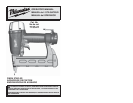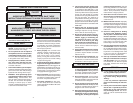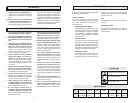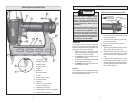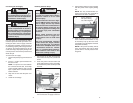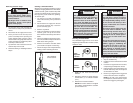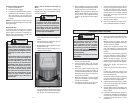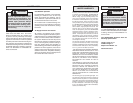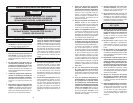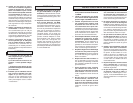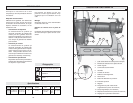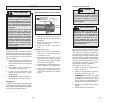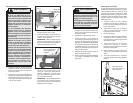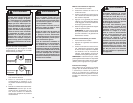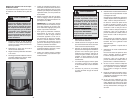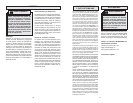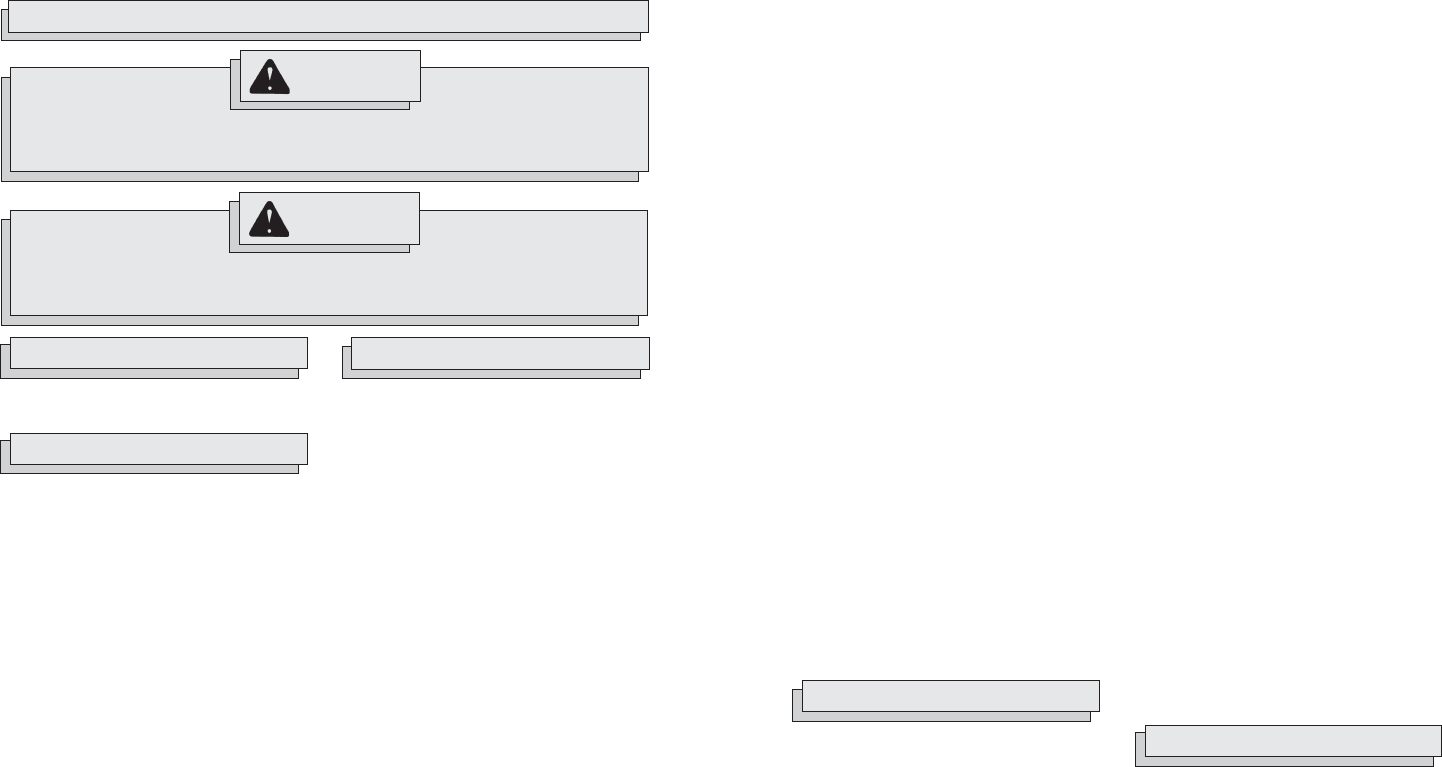
2 3
SERVICE
GENERAL
PERSONAL SAFETY
DANGER
IMPORTANT SAFETY INSTRUCTIONS. SAVE THESE
INSTRUCTIONS PERTAINING TO A RISK OF INJURY OR DEATH
GENERAL SAFETY INSTRUCTIONS
1. To reduce the risk of injury, read all
instructions before using the tool.
WARNING
WHEN USING TOOLS, BASIC PRECAUTIONS SHOULD
ALWAYS BE FOLLOWED, INCLUDING THE FOLLOWING:
WORK AREA
2. Keep the work area clean and well
lighted. Cluttered benches and dark
areas increase the risk of injury.
3.
Do not operate the tool in explosive
atmospheres, such as in the presence
of fl ammable liquids, gases, or dust.
The tool is able to create sparks resulting
in the ignition of the dust or fumes.
4. Keep bystanders, children, and visi-
tors away while operating the tool.
Distractions are able to result in the loss
of control of the tool.
5. Know what is behind your workpiece.
A fastener could travel through the work-
piece and out the other side, striking a
bystander and causing serious injury.
6. DANGER: Avoid performing opera-
tions where the fastener may contact
hidden wiring. Contact with a “live”
wire will make exposed metal parts of
the tool “live” and shock the operator,
resulting in serious injury or death.
Contact a qualifi ed electrician to ensure
a safe work environment exists.
7. Stay alert. Watch what you are doing
and use common sense when operating
the tool. Do not use the tool while tired
or under the infl uence of drugs, alcohol,
or medication. A moment of inattention
while operating the tool increases the
risk of injury to persons.
8. Dress properly. Do not wear loose
clothing or jewelry. Contain long hair.
Keep hair, clothing, and gloves away
from moving parts. Loose clothes,
jewelry, or long hair increases the risk
of injury to persons as a result of being
caught in moving parts.
9. Avoid unintentional starting. Remove
fi nger from the trigger when not driv-
ing fasteners. Be sure the trigger is not
pulled before connecting to the air sup-
ply. Do not carry the tool with your fi nger
on the trigger or connect the tool to the
air supply with the trigger pulled.
10. Do not overreach. Keep proper footing
and balance at all times. Proper footing
and balance enables better control of
the tool in unexpected situations.
11.
Use safety equipment. A dust mask,
non-skid safety shoes and a hard hat
used for appropriate conditions will reduce
personal injuries.
12. The operator and other people in the
work area must wear eye protection
in accordance with ANSI Z87.1. Eye
protection does not fi t all operators in the
same way. Make sure the eye protection
chosen has side shields or provides
protection from fl ying debris both from
the front and sides. The employer is
responsible for enforcing the use of eye
protection by the operator and other
people in the work area. When required,
wear head protection in accordance with
ANSI Z89.1.
13. Always wear ear protectors when
using the tool for extended periods.
Prolonged exposure to high intensity
noise is able to cause hearing loss.
14. Do not carry an air hose or a tool con-
nected to an air hose when climbing
ladders, rigging or scaffolding. Do
not attach an air hose or tool con-
nected to an air hose to your body
when working at elevated heights. At-
tach the hose to the structure to reduce
the risk of loss of balance and injury if
the hose shifts.
15. Always assume that the tool contains
fasteners. Do not point the tool toward
yourself or anyone whether it contains
fasteners or not.
16. Do not nail on top of another nail. This
can cause the nail to be defl ected and
hit someone, or cause the tool to react
and result in a risk of injury to persons.
contact or leaving work area. Verify the
tool is empty and there is no residual pres-
sure in the tool prior to performing these
actions. Such precautionary measures
reduce the risk of injury to persons.
21. Store idle tools out of reach of chil-
dren and other untrained persons.
A tool is dangerous in the hands of
untrained users.
22. Maintain the tool with care. A properly
maintained tool reduces the risk of injury.
If the tool has been dropped, received a
sharp blow, been run over, etc., perform
the "Required Daily Testing" before
further use.
23. Check for misalignment or binding
of moving parts, breakage of parts,
and any other condition that affects
the tool’s operation. If damaged, have
the tool serviced before using. Many ac-
cidents are caused by poorly maintained
tools. There is an increased risk of the
tool bursting if the tool is damaged.
24. Use only those fasteners specifi cally
recommended. Fasteners not identifi ed
for use with this tool by the tool manufac-
turer are able to result in a risk of injury
to persons or tool damage when used
in this tool. See the "Specifi cations"
section for fastener requirements.
25. Use only accessories that are identi-
fi ed by the manufacturer for the spe-
cifi c tool model. Use of an accessory
not intended for use with the specifi c
tool model, increases the risk of injury
to persons.
TOOL USE AND CARE
17. Use clamps or another practical way
to secure and support the workpiece
to a stable platform. Holding the work
by hand or against the body is unstable
and is able to lead to loss of control.
18. Do not force the tool. Use the correct
tool for the application. The correct tool
will do the job better and safer at the rate
for which the tool is designed.
19. Do not use the tool if the trigger does
not turn the tool on or off. Any tool that
cannot be controlled with the trigger is
dangerous and must be repaired.
20.
Disconnect the tool from the air source,
then empty the magazine before making
adjustments, doing tool maintenance,
clearing jams, touching the workpiece
26. a) Tool service must be performed
only by qualifi ed repair personnel.
b) The wrench provided is for tighten-
ing screws during "Required Daily
Testing".
c) Use only identical replacement
parts recommended by the manufac-
turer.
27. Use only the air tool lubricants supplied
with the tool or specifi ed by the manu-
facturer. Do not use other lubricants;
they will damage the tool. See "Acces-
sories" for a list of recommended air tool
lubricants.



